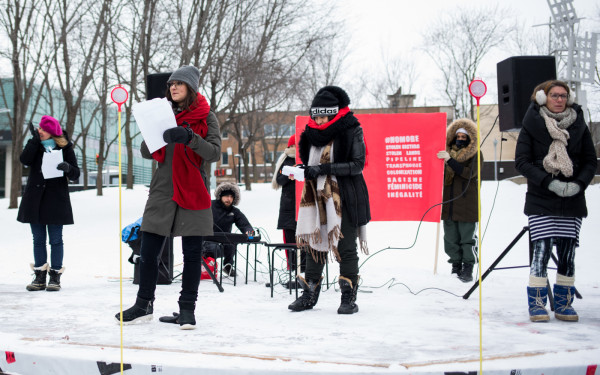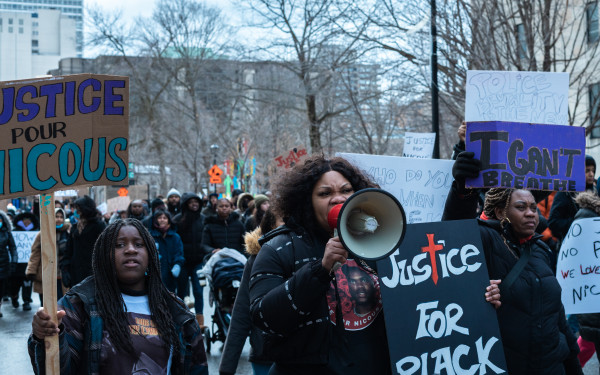SQ Officer Suspended for Firing Rubber Bullets at Student Protest
Three Protesters Injured by Unauthorized Use of Firearm During a 2012 Student Protest in Victoriaville
Sûreté du Québec officer was recently suspended for 35 days without pay due to the use of rubber bullets shot into a crowd during a Victoriaville protest in 2012.
Const. Denis Burelle is now facing consequences for firing 10 bullets into a student protest, according to The CBC. Burelle fired his weapon without approval and injured three protesters.
Maxence Valade, a marcher during the student protest on May 4, 2012, expected to go home at the end of the day. Instead, he was rushed to a hospital with severe head trauma, contusions to the liver, and with one functioning eye instead of two.
Valade is one of many who sustained major and permanent injuries in a flurry of rubber bullets, tear gas, and police in riot gear on that day. In fact, he considers himself lucky.
“If the bullet shot me just a bit higher, I would have been paralyzed, and if the bullet was shot just a bit lower, I would have lost my life,” Valade explained, thinking back to the three days he spent in a coma during his week-long hospital stay.
The Montreal police said plastic bullets are never deployed by their officers at protests.
“People are mistakenly mixing up interventions for different police services. As for the SPVM, and crowd control, we don’t use plastic bullets,” said Sergeant Laurent Gingras, a media relations officer.
“They are extremely strong and only used in extreme conditions. The weapon is used by SWAT teams [within the SQ] in situations where we know we will face armed resistance.”
Gringas said Montreal police are called upon to maintain order at about 1,500 events per year, whether it be something like the Santa Claus parade, or the annual anti-police brutality protest held each year in March. The way officers respond depends entirely on the crowd they’re dealing with.
“We’re not saying every intervention is perfect. Every time we have an event with crowd control, we’re trying to learn from the experience before, and if there’s some things to improve, then we work on that as well.” said Gingras.
In terms of handling protests, Gingras said police have shields and batons, and officers are equipped with helmets and protection underneath their uniforms, but crowd control is not always needed.
“There’s a small percentage of [events] during which crowd control needs to be done, because there’s vandalism, mischiefs committed, bylaws that are broken, cars that are vandalized … We usually know, depending on the crowd that is gathering, whether we will have problems at the event.”
Valade’s experience is among several incidents that inspired a recent campaign called Protest Without Fear, that was launched in early February.
Julien Villeneuve, a member of the campaign said that Protest Without Fear was implemented for the purpose of banning the use of projectile and explosive weapons by the Montreal police.
“We don’t believe better police training, or better guidelines on how to use these weapons is the solution. If these weapons are in the hands of cops, they will be misused, and any kind of weapon that is potentially lethal shouldn’t be used, if at all, only in situations where the life of the police is in jeopardy, and that doesn’t happen in the context of protests.”

2_900_596_90.jpg)
_600_832_s.png)

4_600_375_90_s_c1.jpg)
_600_375_90_s_c1.JPG)

